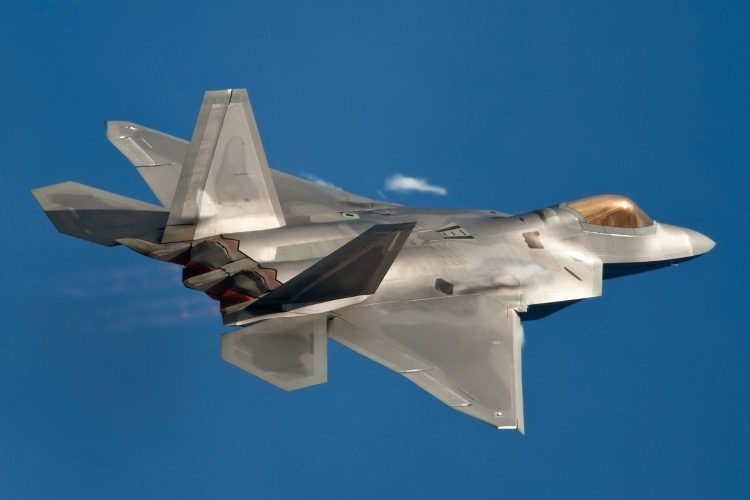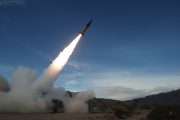
With America’s military and foreign-policy establishments alarmed by the rapid growth of China’s industrial and war capabilities, the U.S. Air and Space forces are rolling out a major refurbishment of their command structures in the hopes that it will make them better prepared to meet the potential conflicts of the 21st century.
Military.com reported the widespread changes in the two branches, which include updates to training programs, bringing back warrant officers, and creating new ranks — all in an effort to prepare for conflict in the Pacific, where China is expanding its influence.
These changes were announced by Air Force Secretary Frank Kendall during the Air & Space Forces Association’s Warfare Symposium conference.
“We are out of time,” Kendall told attendees at the event. “Why do I say that? It’s not that I enjoy sounding like a broken record. It’s because, for at least two decades, China has been building a military that is designed, purpose-built, to deter and defeat the United States if we intervene in the western Pacific.”
Kendall was joined by Air Force Chief of Staff General David Allvin and Chief of Space Operations General Chance Saltzman. The changes totaled 24 — 16 for the Air Force, five for the Space Force, and three that affect the entire Department of the Air Force.
The reintroduction of warrant officer ranks, which were eliminated by the Air Force 65 years ago, was officially affirmed on Monday by service officials. Allvin said this change was the result of the desire to enlist airmen with a focus on cyber and information technology, individuals who are eager to “code for their country.” He emphasized the necessity for the service to enhance its technical expertise in order to remain competitive in these crucial domains.
To that end, another change is the renaming and reorganization of Air Education and Training Command into a new Airman Development Command that will ostensibly “provide airmen a common, mission-focused development and training path.”
Allvin added that he plans to “upgrade and advance the cadet experience” for Air Force Academy and ROTC students.
The military officials who spoke at the symposium did not shy away from naming China directly. “[People’s Republic of China President] Xi Jinping has told his military to be ready to take Taiwan by force by 2027, even if the U.S. intervenes,” said Kendall. “Freshmen at both the Air Force Academy and those entering ROTC units will be commissioned in 2027.”
Military.com recounted another notable proposals announced at Monday’s event:
Other proposed changes include refocusing training overall to create “mission-ready airmen” and set standards for Space Force Guardians that “reflect operations under contested conditions instead of a benign environment,” the service said in an information sheet. Both services also want to update their exercises for more realistic warfighting-focused missions.
In an overall move that seems reminiscent of the Marine Corps’ Force Design — a controversial effort that updates the service’s warfighting strategy to take on a conflict, in part, in the Pacific — the Air Force and Space Force are also modifying some of their operational structures.
This includes structuring operations wings as “units of action” (which will have trained and worked together previously), a move meant to allow them to deploy different types of aircraft in accordance with their missions. This means Air Combat command will have to be reoriented and the relationship between combat wings and base commands will have to change.
It is also anticipated that there will be a new Dominance Systems Center, Air Dominance Systems Center, and Air Force Nuclear Systems Center — all set to be housed within the existing Air Force Materiel Command.
In total, the Department of the Air Force is establishing three new civilian-level offices: the Integrated Capabilities Office, the Office of Competitive Activities, and a Program Assessment and Evaluation Office. These entities share a common objective of modernizing acquisitions and technology to address challenges posed by China.
“We have nothing in the ’24 or ’25 budget for any of these changes,” noted Kendall. “There’s a possibility that we’ll have some funds in ’26.”
And in a memo he authored back in September, Kendall meditated: “No one wants a great power conflict, and no one can predict when one might occur, but come it may and we must be as ready as we can be — now, tomorrow and every day.”
Under Biden, the federal government has made budget cuts resulting in the premature retirement of nearly a dozen ships, while also removing missile systems intended to deter Chinese aggression at sea. This has only exacerbated the growing disparity between America’s waning naval power and China’s rising capabilities.
To compare America and China: The United States has 294 battle force ships, which is lower than the 355 the country is supposed to have by law. Meanwhile, China has a fleet of 340 ships and is expected to have more than 400 by 2025 — part of a plan for fast growth that also includes supplying its military with a fresh stock of surface combat missiles and guided-missile destroyers.
The recently announced Air Force changes are a tacit acknowledgement of the degree to which the United States has fallen behind Beijing. But will they amount to more than drop in the bucket of the progress America must make if it wishes to maintain its naval superiority?




